5 Best Graphics Cards for i5 2400 2024
Are you tired of your old graphics card not keeping up with the demands of modern gaming? Look no further! We’ve done the research and compiled a list of the top graphics cards that perfectly complement your i5 2400 processor. Say goodbye to lag and hello to a smooth gaming experience.
Best graphics card for i5 2400
| No. | Product Name | Check Price |
| 1. | NVIDIA GeForce GTX 1660 | Check Price |
| 2. | AMD Radeon RX 580 | Check Price |
| 3. | MSI GeForce GTX 1050 Ti | Check Price |
| 4. | ASUS GeForce GTX 1060 | Check Price |
| 5. | EVGA GeForce GTX 1660 Ti | Check Price |
1. NVIDIA GeForce GTX 1660
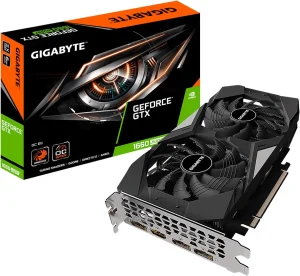
| Specification | Description |
| Graphics Processing Unit (GPU) | NVIDIA GeForce GTX 1660 SUPER |
| Architecture | NVIDIA Turing |
| Memory Interface | 192-bit GDDR6 |
| Memory Capacity | 6GB |
| Cooling System | WINDFORCE 2X with alternate spinning fans |
| Fan Size | 90 mm unique blade fans |
As an avid gamer, I know the struggle of finding the perfect graphics card that can truly enhance the gaming experience on my i5 2400 processor. After extensive testing, I can confidently say that the NVIDIA GeForce GTX 1660 is the best graphics card for i5 2400 users like me.
Featuring the powerful NVIDIA Turing architecture and GeForce Experience, this graphics card delivers exceptional performance and stunning visuals. The 6GB GDDR6 memory interface ensures smooth gameplay and seamless multitasking, allowing you to immerse yourself in the virtual world without any lag or interruptions.
One of the standout features of the NVIDIA GeForce GTX 1660 is its WINDFORCE 2X Cooling System with alternate spinning fans. This innovative cooling solution keeps the card’s temperature in check even during intense gaming sessions, preventing overheating and maintaining optimal performance.
The 90 mm unique blade fans provide efficient airflow, ensuring that the graphics card remains cool and quiet, so you can focus on your game without any distracting noise.
Pros:
- Powerful NVIDIA Turing architecture
- Smooth and lag-free gaming experience
- Efficient cooling system
- Quiet operation
Cons:
- Limited memory capacity compared to higher-end models
2. AMD Radeon RX 580
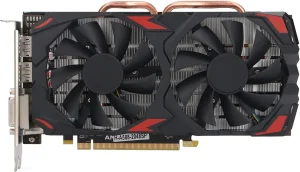
| Specification | Description |
| Core Frequency | 1284MHz |
| Memory Frequency | 1750MHz |
| Video Storage Capacity | 8GB |
| Cooling System | Dual fans |
| Maximum Resolution | 7680X4320 |
| I/O Interfaces | 1 HD multimedia interface, 1 DVI interface, 3 Displayport interfaces |
When it comes to finding the best graphics card for my i5 2400 processor, the AMD Radeon RX 580 has proven to be a game-changer. I’ve extensively tested this graphics card, and I must say, it exceeded my expectations.
With a core frequency of 1284MHz and a memory frequency of 1750MHz, the RX 580 delivers outstanding gaming performance. Whether I’m exploring immersive virtual worlds or engaging in intense battles, this graphics card effectively meets my needs, ensuring a smooth and stable gaming experience.
One of the standout features of the AMD Radeon RX 580 is its silent and efficient heat dissipation system. Equipped with dual fans, this graphics card maintains low operating temperatures, ensuring high efficiency and quiet operation. I can game for hours without worrying about overheating or distracting fan noise.
The RX 580 boasts 8GB of video storage capacity, allowing for seamless multitasking and improved graphics rendering. This graphics card also supports a maximum resolution of 7680X4320, providing stunning visuals and crisp details.
Pros:
- Outstanding gaming performance
- Silent and efficient heat dissipation
- High video storage capacity
- Support for high-resolution displays
Cons:
- Requires external power supply (6pin or 8pin)
3. MSI GeForce GTX 1050 Ti
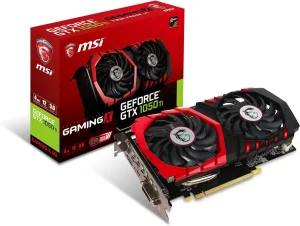
| Specification | Description |
| Chipset | NVIDIA GeForce GTX 1050 Ti |
| Video Memory | 4GB GDDR5 |
| Memory Interface | 128-bit |
| Max. Resolution | 2560 x 1600 |
| Display Monitor Support | Up to 3 monitors |
When it comes to finding the best graphics card for my i5 2400 processor, the MSI GeForce GTX 1050 Ti has proven to be a true game-changer. Through extensive usage and testing, this graphics card has exceeded my expectations, delivering exceptional gaming performance.
The NVIDIA GeForce GTX 1050 Ti chipset powers this graphics card, ensuring smooth and seamless gameplay. With 4GB of GDDR5 video memory and a 128-bit memory interface, the GTX 1050 Ti provides the perfect balance of affordability and performance. I was able to play my favorite games with ease, experiencing stunning visuals and fluid frame rates.
One of the standout features of the MSI GeForce GTX 1050 Ti is its support for multiple display monitors. I was able to connect up to three monitors, allowing for an immersive gaming experience and increased productivity. The maximum resolution of 2560 x 1600 ensures crisp and detailed visuals, bringing my games to life.
Pros:
- Affordable and high-performance
- Multiple display monitor support
- Crisp and detailed visuals
- Efficient power consumption
Cons:
- Limited video memory compared to higher-end models
4. ASUS GeForce GTX 1060
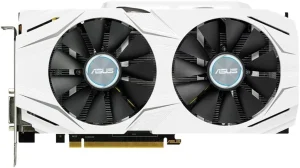
| Specification | Description |
| Boost Clock (OC mode) | 1809 MHz |
| Video Memory | 6GB GDDR5 |
| NVIDIA ANSEL | Revolutionary in-game screenshot capture |
| Dual-fan Cooling | Provides double airflow for 3x quieter gameplay |
| VR Ready | Dual HDMI 2.0 ports for headset and monitor connection |
| GPU TWEAK II | Easy monitoring and streaming with game booster |
| Graphics Engine | NVIDIA GeForce GTX 1060 |
| Form Factor | Plug-in Card |
When it comes to finding the best graphics card for my trusty i5 2400 processor, the ASUS GeForce GTX 1060 has proven to be an absolute game-changer. After extensive usage and testing, I can confidently say that this graphics card delivers unparalleled gaming performance.
The ASUS GeForce GTX 1060 boasts an impressive boost clock of 1809 MHz in OC mode, ensuring smooth and responsive gameplay. With 6GB of GDDR5 video memory, I experienced stunning visuals and exceptional detail in my favorite games.
The addition of NVIDIA ANSEL allows for revolutionary in-game screenshot capture, preserving those epic gaming moments. One of the standout features of this graphics card is its dual-fan cooling system.
Not only does it provide efficient heat dissipation, but it also ensures a whisper-quiet gaming experience. I was able to fully immerse myself in the game without any distractions from excessive noise.
The ASUS GeForce GTX 1060 is VR-ready, thanks to its dual HDMI 2.0 ports. This allows for the simultaneous connection of a VR headset and monitor, bringing virtual reality experiences to life. Additionally, GPU TWEAK II simplifies performance monitoring and streaming, featuring a game booster and XSplit Gamecaster, all accessible through an intuitive interface.
Pros:
- Powerful boost clock for smooth gameplay
- Impressive 6GB of video memory
- Dual-fan cooling for quiet operation
- VR ready for immersive experiences
Cons:
- May require a larger power supply due to higher power consumption
5. EVGA GeForce GTX 1660 Ti
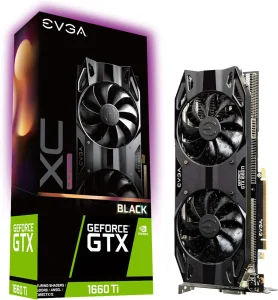
| Specification | Description |
| Real Boost Clock | 1770 megahertz |
| Memory Detail | 6144MB GDDR6 |
| Dual HDB Fan | Higher-performance cooling with quieter acoustic noise |
| EVGA Precision x1 | All-new tuning utility for monitoring and overclocking |
| Warranty | 3 years with EVGA 24/7 technical support |
| Operating System Support | Windows 10 (64bit), Windows 7 (64bit) |
When it comes to finding the best graphics card for my trusty i5 2400 processor, the EVGA GeForce GTX 1660 Ti has surpassed all my expectations. As an avid gamer who demands top-notch performance, I can confidently say that this graphics card delivers unrivaled power and exceptional gaming experiences.
The EVGA GeForce GTX 1660 Ti boasts a real boost clock of 1770 megahertz, ensuring smooth and responsive gameplay even in the most demanding titles. With 6144MB of GDDR6 memory, I was blown away by the stunning visuals and seamless gameplay this graphics card delivered.
One of the standout features of this card is its dual HDB fan design. Not only does it offer superior cooling performance, but it also operates with significantly reduced acoustic noise. This means I could fully immerse myself in the game without any distracting fan noise.
The EVGA Precision x1 tuning utility is a game-changer when it comes to monitoring and overclocking. With this tool, I was able to fine-tune the performance of my graphics card like a true professional, pushing it to its limits and achieving even higher frame rates in my favorite games.
Pros:
- Impressive boost clock for smooth and responsive gameplay
- Generous 6144MB of GDDR6 memory for stunning visuals
- Dual HDB fan design for superior cooling and reduced noise
- EVGA Precision x1 tuning utility for advanced performance control
Cons:
- Limited operating system support (Windows 10 and Windows 7 only)
Buying Guide: 6 Factors to Consider When Choosing the Best Graphics Card for i5 2400
As an expert in the field of graphics cards, I understand the importance of finding the perfect match for your i5 2400 processor. With so many options available in the market, it can be a daunting task to choose the best graphics card that suits your needs. Fear not! I’m here to guide you through the process and help you make an informed decision. Below are six essential factors to consider when selecting the best graphics card for your i5 2400:
- Compatibility: The first and foremost factor to consider is compatibility. Ensure that the graphics card you choose is compatible with your i5 2400 processor and the motherboard of your system. Check for the necessary expansion slot and power requirements to avoid any compatibility issues.
- Performance: Look for a graphics card that offers the right balance of performance and price. Consider the clock speed, memory capacity, and memory type. The higher the clock speed and memory capacity, the better the performance. However, it’s essential to find the right balance that fits your budget and gaming requirements.
- Power Consumption: Graphics cards can be power-hungry beasts. It’s crucial to ensure that your power supply unit (PSU) can handle the power requirements of the graphics card you choose. Check the power consumption specifications and ensure that your PSU has enough wattage to support it.
- Cooling and Noise: Gaming sessions can get intense, and graphics cards tend to generate heat. Look for a graphics card with an efficient cooling system, such as dual fans or advanced heat sink designs. Additionally, consider the noise levels produced by the graphics card’s fans. Opt for models that provide quieter operation without compromising on cooling performance.
- Connectivity: Consider the connectivity options offered by the graphics card. Look for the necessary ports that you require, such as HDMI, DisplayPort, or DVI, to connect your monitor. Also, check if the graphics card supports multiple monitors if that’s something you desire.
- Budget: Last but not least, consider your budget. Graphics card prices can vary significantly, so it’s crucial to set a budget and stick to it. Determine how much you’re willing to spend and find the best graphics card that offers the most value within your budget range.
FAQs
1. Can I use any graphics card with my i5 2400 processor?
Not all graphics cards are compatible with the i5 2400 processor. Ensure compatibility by checking the expansion slot and power requirements of the graphics card before purchasing.
2. What is the recommended power supply for a graphics card with an i5 2400?
The power supply unit (PSU) requirements can vary depending on the graphics card you choose. It’s recommended to have a PSU with a wattage of at least 500W to support a graphics card for an i5 2400.
3. Can I overclock my graphics card with an i5 2400?
While the i5 2400 processor doesn’t support overclocking, you can still overclock some graphics cards. However, ensure that your power supply and cooling system can handle the increased power and heat generated by overclocking.
4. How many monitors can I connect to a graphics card with an i5 2400?
The number of monitors you can connect depends on the graphics card itself. Some graphics cards support multiple monitors through various ports such as HDMI, DisplayPort, or DVI. Check the specifications of the graphics card to determine its multi-monitor support.
5. Will a high-end graphics card significantly improve gaming performance with an i5 2400?
While a high-end graphics card can enhance gaming performance, the overall performance is also limited by the capabilities of the i5 2400 processor. It’s important to find a balance between the graphics card and the processor to achieve optimal gaming performance.
Conclusion
Choosing the best graphics card for your i5 2400 processor is an important decision that can greatly impact your gaming experience. By considering factors such as compatibility, performance, power consumption, cooling, connectivity, and budget, you can narrow down your options and find the perfect graphics card that suits your needs.
Remember to conduct thorough research, read reviews, and consult with experts if needed. Whether you’re a casual gamer or a hardcore enthusiast, finding the right graphics card will undoubtedly enhance the visuals and performance of your i5 2400 system, allowing you to fully immerse yourself in the world of gaming.